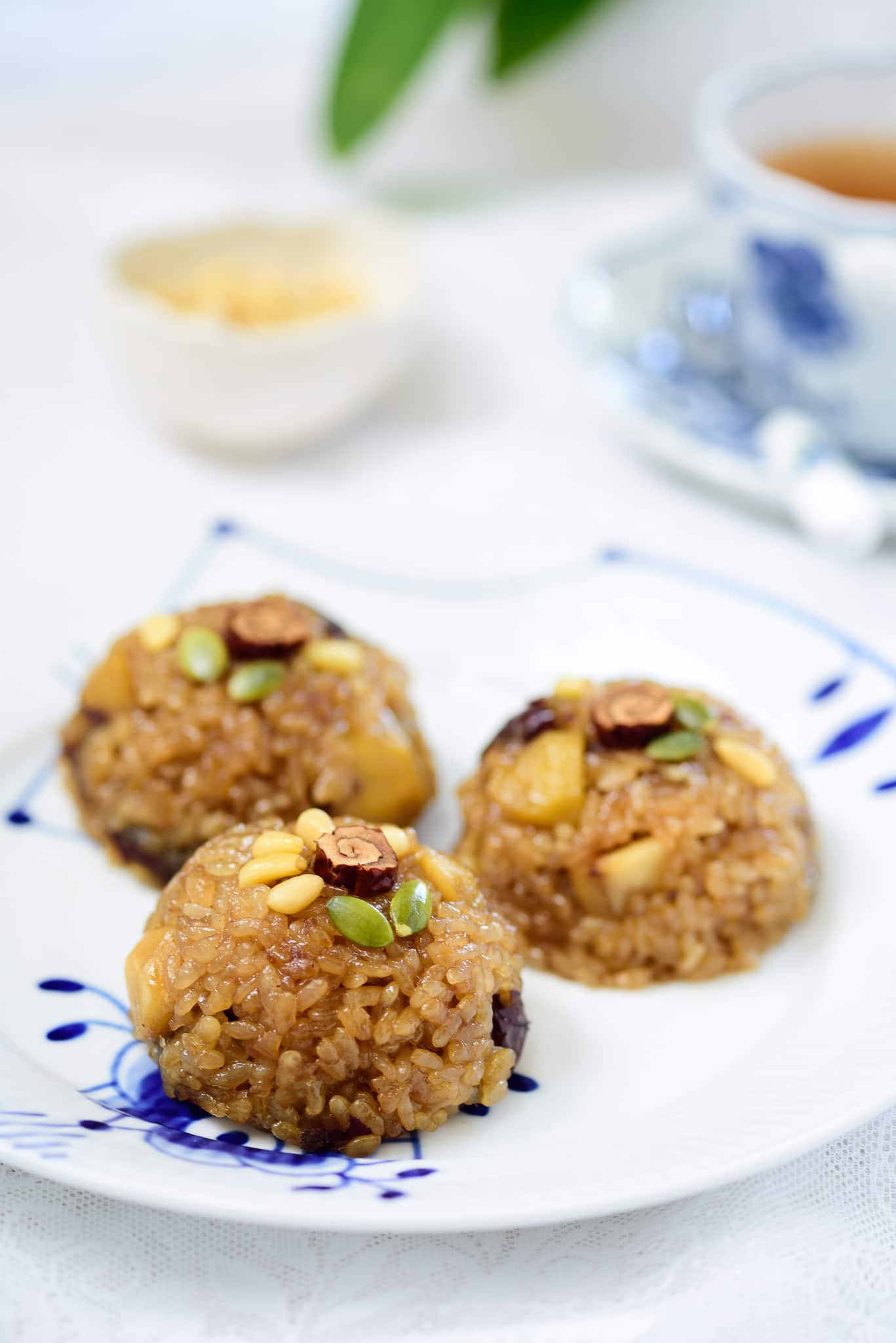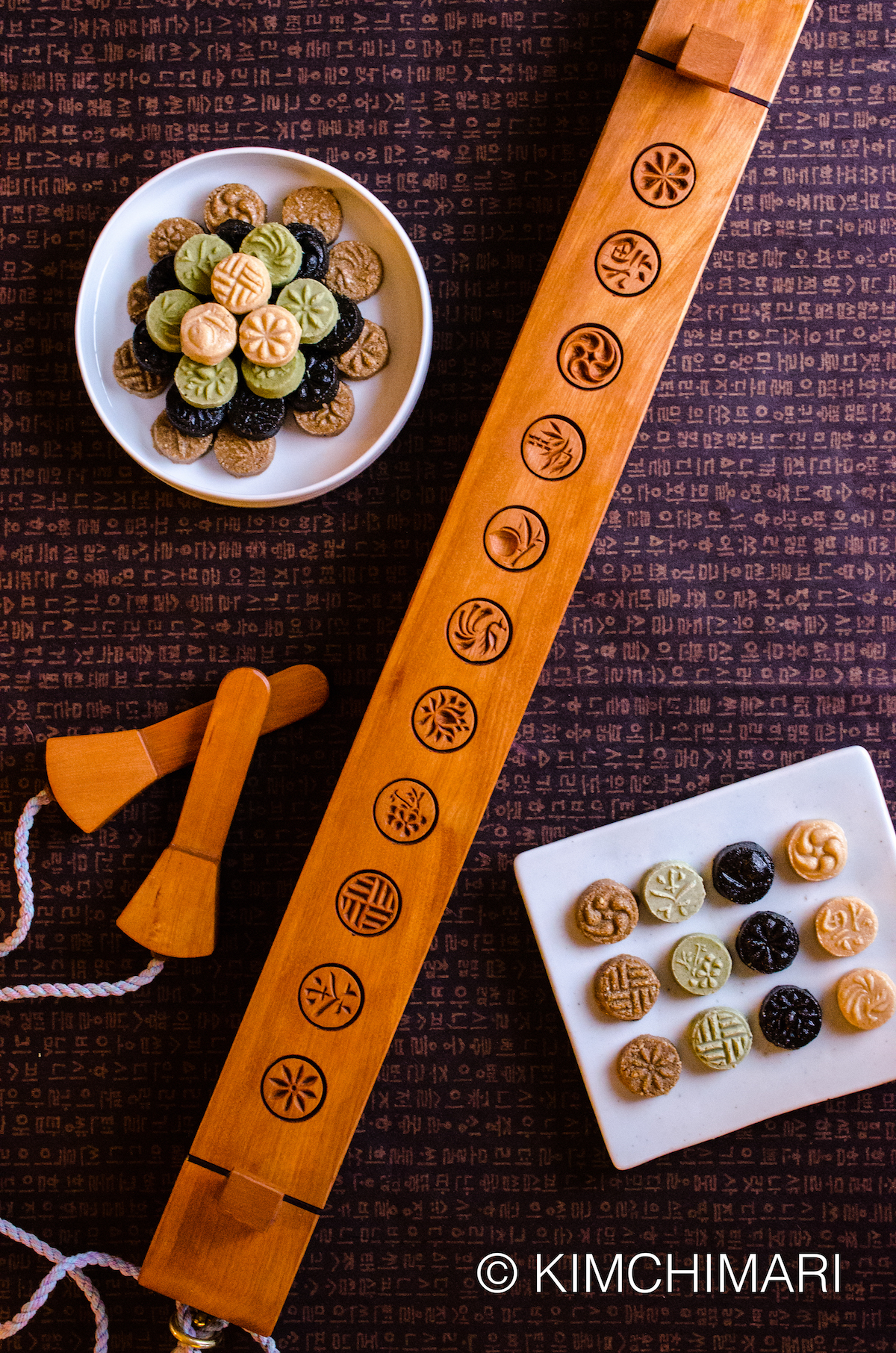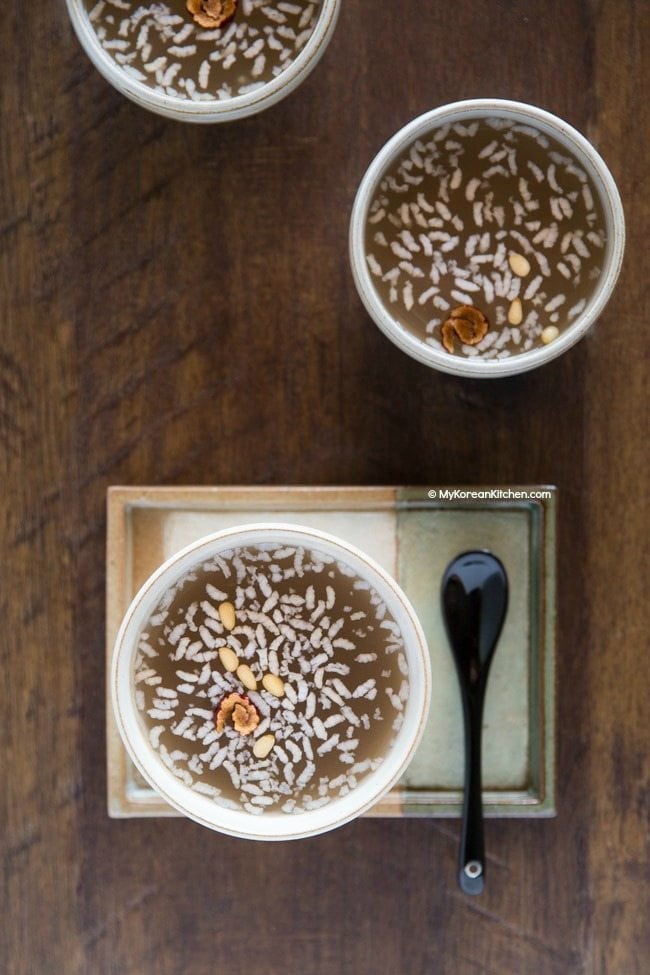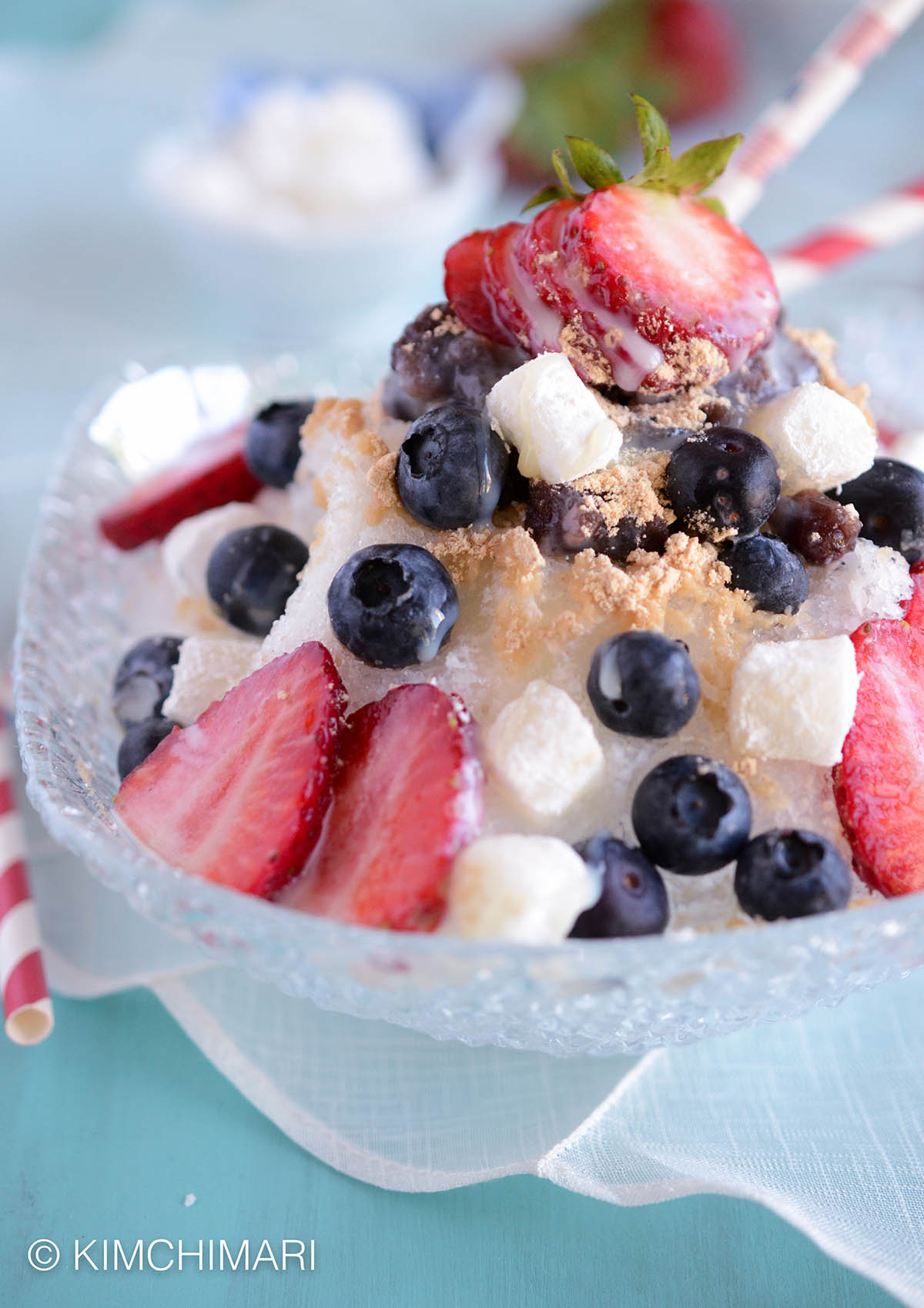Korean desserts are an important part of the cuisine–from traditional songpyeon to modern bingsu, South Korea has a range of deliciously unique desserts that everyone can enjoy!
In South Korea, desserts are just as ingrained in the culinary and eating culture in South Korea as their globally famous barbecue and street foods. When visiting South Korea, we recommend trying traditional desserts invented long ago AND more modern, trendy treats popular with the younger generations. Either way, both styles are delicious!
For this week’s ‘Emily Recommends’ series, we wanted to introduce 15 traditional and modern Korean desserts for you to try when cooking at home or visiting South Korea. We also listed recipes by amazing Korean bloggers and Youtubers, as well as recipes from our own website. We hope you enjoy reading all about these different desserts!
So, let’s learn about Korean desserts!
Traditional Korean Desserts
For generations, South Korean citizens continued to pass down dessert recipes linked closely to their food culture. While some of these recipes go back to the Joseon Dynasty (1392–1910), a time when Kings and Confucianism ruled, others go even further back in Korean history to ancient and medieval times.
Whatever the case, these dessert traditions survived famine, wars, regrowth, and prosperity. Nowadays, people save many of these traditional Korean treats to serve at celebrations, holidays, and special occasions.
Let’s take a look at some of South Korea’s most popular and famous traditional desserts!
1. Yaksik (Sweet Rice Dessert)
Yaksik refers to a sweet dish made from steamed glutinous rice mixed with chestnuts, jujube, and pine nuts. Once mixed, people then season it with honey (or brown sugar), sesame oil, soy sauce, and the occasional cinnamon. The name for this dessert comes from ‘yak’ meaning medicine and ‘sik’ meaning food. During the Joseon Dynasty, people commonly referred to honey as ‘yak’ because of its medicinal uses.
Legends tell of King Soji of Silla starting on a journey in the year 488. Suddenly, a crow appeared and warned him of danger. Because of the notice, the King saved himself from potential assassination. King Soji then designated January the 15th as a day of remembrance. At the time, he used glutinous rice as an offering during the commemorative rites–thus the origin of yaksik.
Now, Koreans often eat yaksik during Jeongwol Daeboreum, a Korean holiday that falls on January 15th of the lunar calendar. They also eat it during weddings and other festivities.
For this Korean dessert, I recommend checking out Hyosun’s recipe from her blog Korean Bapsang.

The Korean Dessert Named Yaksik.
2. Songpyeon (Steamed Rice Cakes)
Songpyeon is a dessert that Koreans make by forming short-grain rice powder into a rice cake. After forming the rice cake dough, they typically place fillings such as soybeans, chestnuts, jujubes, dates, red beans, and sesame seeds in the center. Then, they shape the rice cakes. Once stuffed and shaped, the rice cakes get steamed until they become soft and chewy.
Songpyeon dates back to the Goryeo Period (918-1392). At the time, families would make songpyeon from fresh rice after the harvest. Nowadays, people still eat these during Chuseok, a Korean national holiday celebrating the bountiful harvest in autumn.
For a songpyeon recipe, I recommend checking out the Youtuber ‘아내의 식탁 W Table’. She includes English captions and instructions on her video. Please remember to turn on closed captions!
3. Dasik (Tea Cookies)
In Korea, dasik refers to different styles of bite-sized treats that you serve with tea. Koreans use sesame seeds, rice four, and/or soybean flour. Once they make the cookie dough, they then press the dough in decorative and intricate molds called dasikpan (다식판).
Often, these cooks come in many different colors such as brown, black, white, green, and milk. While the neutral colors develop from the main ingredients, the colorful versions come from added flavors. For example, Koreans often use matcha green tea to create the green color.
Finally, Dasik cookies can refer to a variety of traditional Korean confections served with tea. An example of a dasik is hangwa, a traditional Korean confectionery made with grain flour, fruits, honey, and more.
For this Korean dessert, we recommend checking out JinJoo’s recipe on her blog Kimchimari!

Beautiful Dasik Cookies Next to the Mold.
4. Sikhye (Sweet Rice Punch)
Sikhye is a traditional sweet Korean beverage that is usually served as an after-meal dessert. Koreans make this drink by pouring malt water over cooked rice. The malt water then steeps until rice begins to floats to the top. Finally, they strain out the sediments and cook the liquid until the natural sweetness emerges.
Unfortunately, Koreans have not found the origins of this drink in their history. Though that is the case, the word sikhye is purely Korean and does not have an equivalent in either Japan or China. Thus, people believe the drink is purely Korea without any influences from other countries and cultures.
For this dessert, I recommend checking out Sue’s recipe on her blog My Korean Kitchen.

Koreans Keep the Rice in the Drink!
5. Sujeonggwa (Cinnamon Punch)
In Korea, sujeonggwa is a traditional cinnamon punch made from dried persimmons (gotgam), ginger, cinnamon, and a pine nut garnish. Like sikhye, people commonly serve this punch cold and as a dessert.
Currently, the earliest known mention of sujeonggwa dates back to 1849 in the book Dongguksesigi, a book explaining the traditional customs in Korea. Written by Hong Suk Mo during the Joseon Dynasty, the book explains each custom in detail. Though this is the first written mention of sujeonggwa, people believe the drink possibly dates back much further to the Goryeo Dynasty.
Made with healthy ingredients, this drink can act as a digestive aid after a large meal. Some say it can even help fight a cold! For this dessert, I recommend checking the Youtube Channel Crazy Korean Cooking.
6. Yakgwa (Honey Pastry)
Yakgwa is a deep-fried, wheat-based Korean confection made with honey, rice wine, sesame oil, and ginger juice. This pastry is a type of hangwa.
The history of yakgwa dates back many generation to the Silla era (668-935) when Koreans served it during Buddhist rites. In later years, Koreans began serving yakgwa during certain holidays like Chuseok as well. Now, people can easily find this treat in grocery stores and traditional street markets throughout the year.
For this dessert, we recommend checking out the Youtube Channel ‘Umi’s cooking우미스쿠킹’. She includes English ingredient captions on all her videos!
7. Bukkumi (Pan-Fried Rice Cakes)
While songpyeon are rice cakes that are stuffed and steamed, bukkumi are rice cakes that are stuffed and pan-fried! This traditional rice cake, tteok in Korea, is typically made with glutinous rice flour and/or sorghum flour.
Often, Koreans stuff bukkumi with red bean paste, sesame seeds, cinnamon powder, sugar, and/or honey. They then shape the rice cakes to look like a flat half-moon. Originally, bukkumi came from the Gangwondo province of South Korea. Then, it spread throughout the country as it gained popularity.
For this dessert, we recommend checking out the Youtube Channel Maangchi!
Now, let’s move on to some modern Korean desserts!
Modern Korean Desserts
While Koreans still love traditional desserts, new and modern desserts have become popular with the younger generations. While some of these modern desserts come from street vendors, others developed and became famous from social media and trends.
Let’s look at some of the most famous modern Korean dessert recipes!
8. Bingsu (Shaved Ice Dessert)
Bingsu is a shaved ice dessert. Served in a bowl, the shaved ice sits on the bottom. Then, they add different toppings based on the type of bingsu you ordered.
Some of the Most Famous Versions of Bingsu Include:
- Injeolmi Bingsu: Shaved ice topped with Korean glutinous rice cakes coated with a soybean powder.
- Patbingsu: Shaved ice topped with sweet red beans.
- Green Tea Bingsu: Shaved ice topped with green tea ice cream and other matcha toppings.
- Melon Bingsu: Shaved ice served in half a melon and topped with pieces of melon.
- Mango Bingsu: Shaved ice topped with pieces of mango, fruit syrup, and other toppings.
Other added toppings can include ice cream, different types of fruit syrup, condensed milk, Japanese mochi, whipped cream, and more! The options are truly endless with this deliciously ice-cold treat. Soon, you will crave this cold dessert during the hot summer months.
In South Korea, bingsu is one of the most popular desserts to eat with friends because it comes in servings large enough to share! Also, beyond being tasty, bingsu is popular as a cute and aesthetically pleasing dessert that the younger generations can share on social media! Koreans actually developed bingsu during the Joseon era, but with social media and trends, it has become a modern dessert with all its different types of special toppings!
For this dessert, we recommend checking out JinJoo’s recipe from her blog Kimchimari!

Beautiful Strawberry and Blueberry Bingsu
For those who hope to visit South Korea, the most popular bingsu cafe chain in Seoul and throughout South Korea is Sulbing. You can find almost every bingsu flavor available. They are most famous for their ‘snow flower bingsu’, which they make by slicing the shaved ice so thinly it makes the dish fluffy and special to eat.
9. Hotteok (Sweet Pancakes)
In South Korea, one of the most popular street vendor desserts is hotteok. It is a sweet pancake filled with brown sugar, honey, chopped nuts, and/or cinnamon. The vendors make the dough with a mixture of wheat flour, milk, sugar, and yeast. Once the dough rises, they fill it and cook it on a well-oiled griddle. Once on the griddle, the vendor presses the dough into a flat circle.
During the winter, these sweet pancakes warms the belly as you walk around the city streets. Just so you know, hotteok retains heat very well! You can often find the vendors placing the hotteok into little paper cups to protect your hands from burning. Be careful when taking a bite! The oozing center can burn your mouth!
For hotteok, we recommend checking out the Youtube Channel Seonkyoung Longest!
10. Bungeoppang (Fish-Shaped Bread with Sweet Red Bean)
Bungeoppang is a popular, kid-friendly Korean street food made by filling fish-shaped pastry with sweet red bean paste. Vendors make the shape by filling fish-shaped molds with the batter. Before closing the molds and cooking the pastry, they place the sweet red beans at the center. The name comes from ‘bungeo’ meaning carp, and ‘ppang’ meaning bread.
Originally, bungeoppang developed from a similar Japanese treat called taiyaki. The Japanese introduced this street food to Korea around the 1930s during the Japanese occupation of South Korea. Both taiyaki and bungeoppang developed by adapting western-style waffles to fit their native culinary palates.
For this recipe, we recommend checking out the Korean Youtube Channel ‘꿀키honeykki’. She includes English ingredient captions on all her embedded into all her videos!
For those wanting more fish-shaped breads, try eating the type filled with custard pastry cream. This version is known as euneoppang.
11. Ppopgi (Baking Soda Cookie)
Ppopgi, otherwise known as dalgona, is a toffee-like cookie made from sugar and baking soda. Once you combine the two over heat, the baking soda and sugar melt together into a richly caramel-colored molten liquid. Once cooled, the liquid hardens into a honeycomb-like toffee.
Street vendors make cookies by pouring the liquid onto a flat surface. As it spreads out onto the surface, they then press shapes into the cookie. The vendors would often challenge kids to remove the shape at the center without shattering the entire cookie. If they could remove the shape, the vendors would give out free cookies. In Korea, this candy is known as a retro street food because of its immense popularity with kids in the 1970s and 1980s.
We recommend checking out our recipe on this blog!

Korean Ppopgi Cookies
In 2020, during the beginning of the pandemic, dalgona coffee started trending around the world through social media. The name of the coffee comes from this Korean treat!
12. Chapssal Doughnuts
Chapssal doughnuts are a Korean dessert made with glutinous rice flour. Koreans often fill the doughnuts with sweetened red bean jelly/paste and coated it with sugar, powdered sugar, and/or cinnamon. The rice flour dough makes a crunchy exterior and a chewy interior. In many ways, chapssal doughnuts are a mixture between a western pastry doughnut and a Korean tteok (rice cake).
While you can find these doughnuts at street vendors and specialty bakeries, you can also find them in major franchises such as Dunkin’ Donuts Korea and Paris Baguette.
For this recipe, we recommend checking out Holly’s blog Beyond Kimchee!

Korean Chapssal Doughnuts
13. Kkwabaegi (Twisted Doughnut)
Kkwabaegi is a Korean twisted doughnut made from wheat and glutinous rice flour. Before deep frying in oil, the vendor twists the dough, which creates its iconic shape.
While there are many similar iterations around the globe, such as mahua in Mainland China, treccia in Italy, and Bánh Quẩy Thừng in Vietnam, the Korean version uses a mixture of yeasted wheat and glutinous rice flour mixed with butter. The texture of the Korean version is soft and spongy.
For many kids, this is the perfect after-school snack!
For this Korean dessert recipe, I recommend checking out the Youtube Channel Future Neighbor!
14. Melona (Ice Cream Bar)
Ask any Korean kid (or adult for that matter) to name a Korean ice cream you NEED to try, and they will answer Melona. Binggrae Co. makes and produces Melona. At this point, the ice cream bar is as part of the Korean summer dessert culture as ice cream sandwiches are in American culture.
The original flavor tastes like a melon, hence where the name comes from. Now, the company has branched out the flavors to include strawberry, banana, mango, coconut, and more. In Korea, you can find these ice cream bars in any convenience, grocery, or corner mart store.
If you want to try making a variation of this ice cream bar, we recommend checking out Cynthia’s blog Two Red Bowls. She transforms the concept of melon ice cream into a delicious and sophisticated jasmine-honeydew sorbet.

Jasmine-Honeydew Sorbet
15. Injeolmi (Rice Cake)
Injeolmi is a type of Korean tteok, otherwise known as rice cake in English. First, Koreans make rice cakes by pounding steamed rice flour. Then, once pounded, they shape the doughy rice cakes into small bite-sized pieces. Finally, they dust the rice cakes with powdered dried beans and other ingredients.
Injelomi rides the line between a traditional and modern Korean dessert. While Korean have enjoyed this dessert for an extremely long time, it is still as popular and trendy as ever. If you travel to Korea, we recommend that you try these treats!
For this recipe, we recommend checking out Maangchi’s Youtube Channel!
Do You Have Any Favorite Korean Desserts?
In the end, did we list your favorite Korean dessert recipe? If not, what are some of your favorite Korean desserts? We would love to hear in the comment section below! If you want further recommendations for Korean foods check out:
If you have any questions or comments about Korean desserts, you can also email us at [email protected]. Finally, we would love to hear from you through our social media as well! You can follow us at @carvingajourney on Instagram, Twitter, Facebook, and Pinterest. Or, if you would like more articles like these, you can subscribe to our blog by joining our mailing list. We hope you enjoy our list of Korean desserts. Thank you so much for stopping by!
Carving A Journey is a participant in the Amazon Services LLC Associates Program, an affiliate advertising program designed to provide a means for sites to earn advertising fees by advertising and linking to Amazon.com. Although we may earn commissions for our endorsement, recommendation, testimonial, and/or link to any products or services from this website, these opinions are my own and I fully support these products.

